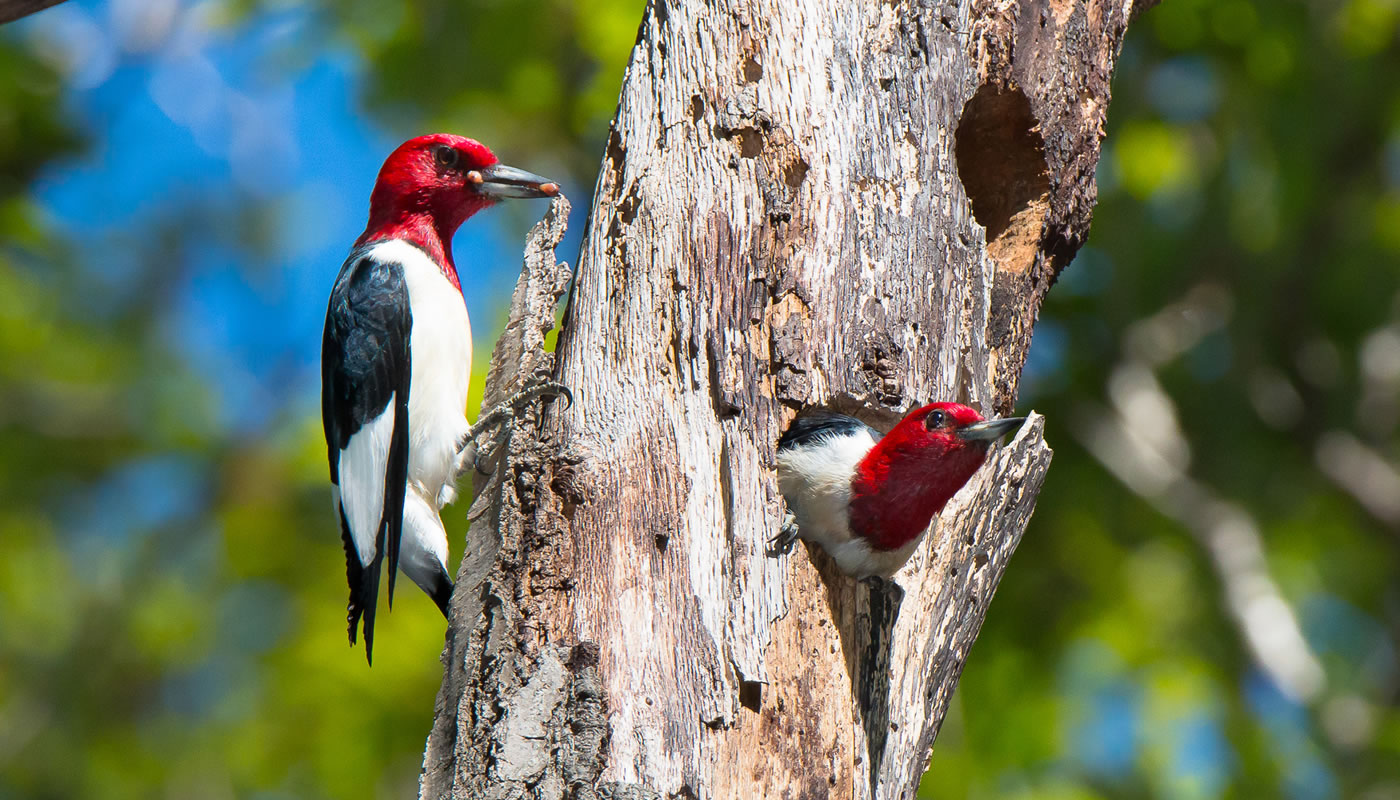“Why don’t you clean up the dead trees in the forest?” is one of the most frequent questions residents ask the Forest Preserves’ Resource Management staff. While dead trees may not be the most attractive part of a forest, they are essential to its health. As dead wood is decomposed (by fungi, bacteria and other life forms) it aids new plant growth by returning important nutrients to the ecosystem.
And those seemingly dead trees are actually teeming with life! Logs (dead trees on the ground) and snags (standing dead trees) play a vital role in the lifecycles of hundreds of species of wildlife, providing a place to nest, rest, eat and grow. A few examples you may have seen:
- Some eagles, hawks and owls use snags or dead branches to get a clear view of potential prey when hunting. Similarly, certain birds that engage in flycatching (catching flying insects directly out of the air) will use these perches to launch their aerial attacks.
- Snakes use logs to sun themselves in summer to help regulate their internal temperature. Logs also provide snakes with a place to hide, find a meal or (for some) hibernate for the winter.
- Many woodpeckers nest in cavities excavated in snags (or dead parts of living trees) while using those same dead trees to drill for food.
- Some mammals—including tree squirrels, opossums and raccoons—use dead trees as nesting sites.
- Salamanders in our area use rotting logs or stumps as both shelter and a source of food.
- Many species of fungi grow only on dead wood, breaking it down and returning important nutrients to the soil.
And that’s not taking into account the many living things (from microscopic bacteria to insects) that may escape your glance.
Of course, there are some dead trees that need to be removed because they may create an unsafe situation. Our Resource Management staff regularly removes dead trees from near buildings, roads, parking lots and trails. They have been especially active removing trees affected by the emerald ash borer. If you see a dead tree that you think poses a safety risk, please fill out our contact form (and select “Fisheries, Wildlife, Trees and Trails”) to let us know where to find it.

